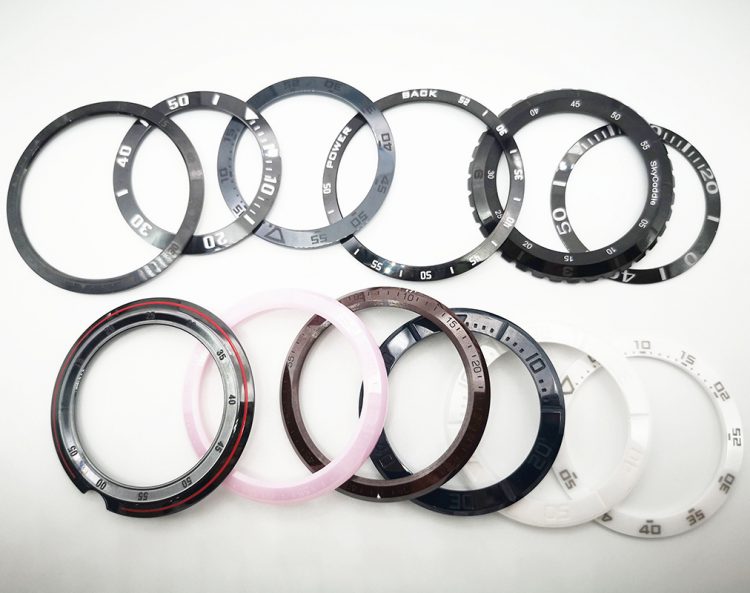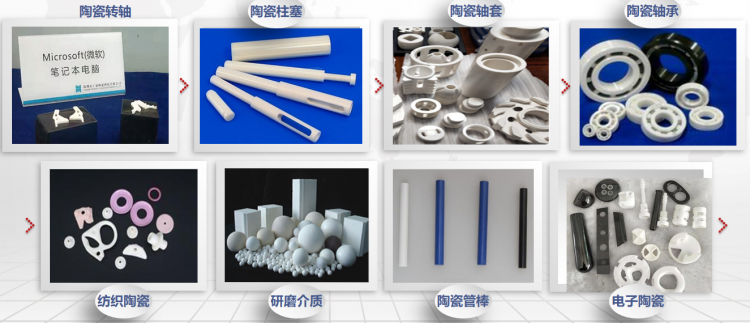Ceramic Injection Molding (CIM) is a new process for preparing ceramic parts developed by combining the polymer injection molding method with the ceramic preparation process. Similar to the metal injection molding (MIM) technology developed in the 1970s, they are the main branches of powder injection molding (PIM) technology, and are developed on the basis of the relatively mature polymer injection molding technology. For mass production of ceramic products with high dimensional accuracy and complex shapes, the use of ceramic powder molding is the most advantageous.

1. Characteristics of CIM ceramic injection molding technology
Advantage:
①The molding process has the characteristics of high degree of mechanization and automation, high production efficiency, short molding cycle, high blank strength, and its process can be precisely controlled (program control), which is easy to achieve large-scale and large-scale production;
② It can nearly net shape various small ceramic parts with complex geometric shapes and special requirements, so that the sintered ceramic products do not need to be machined or less processed, thereby reducing expensive ceramic processing costs;
③The formed ceramic products have extremely high dimensional accuracy and surface finish.
Disadvantages: One-time equipment investment and processing costs are high, and it is only suitable for mass production.
2. CIM process flow of ceramic injection molding

Ceramic injection molding
The manufacturing process of ceramic precision injection molding is shown in Figure , which mainly includes the following four links:
① Feeding preparation:
The feed is a mixture of powder and binder. The injection process requires the injection feed to have good fluidity, which requires the selection of powders that meet the requirements and an appropriate binder system, and a certain loading ratio at a certain temperature. Injection molding feeds, so as to ensure the smooth progress of the subsequent process, and its products can go from the laboratory to the high-tech market. So feed preparation is very critical in the whole process.
②Injection molding and mold design:
Improper control of the injection molding process can lead to the formation of many defects in the product, such as cracks, pores, welds, delamination, powder and binder separation, etc., and these defects cannot be detected until debinding and sintering. CIM often uses multi-cavity molds. The dimensions of each cavity are different, and the wear of the cavity in use will lead to different sizes of parts. In addition, the use of injection return material can affect viscosity and rheology. Therefore, controlling and optimizing molding parameters such as injection temperature, mold temperature, injection pressure, and pressure holding time is crucial to reducing the fluctuation of green body weight, preventing the separation and segregation of components in the injection material, and improving product yield and material utilization. .
The mold design of CIM technology mainly considers the flow control of the feed material in the mold cavity during injection molding. Because most of CIM products are small-sized parts with complex shapes and high precision requirements, it is necessary to carefully design and arrange the position of the feed port, the length of the runner, and the position of the exhaust hole. Of course, mold design requires a clear understanding of feed rheological properties, cavity temperature and residual stress distribution. In addition, computer simulation technology will play an important role in powder injection molding mold design.
③Degreasing process:
Degreasing is the process of removing organic matter from the molding body and producing a small amount of sintering by heating and other physical methods. Compared to batching, molding, sintering and post-processing of ceramic parts, debinding is the most difficult and important factor in injection molding. Incorrect process methods and parameters of the debinding process cause inconsistent product shrinkage, resulting in deformation, cracking, stress and inclusions. Debinding is also important for subsequent sintering, and cracks and deformations that occur during debinding cannot be compensated for by sintering. Binder and degreasing are linked together to determine the way of degreasing. In addition to traditional thermal degreasing and solvent degreasing, the current degreasing process also includes catalytic degreasing and water-based extraction degreasing developed in recent years.
④Sintering:
The degreasing ceramic green body is densified and sintered at high temperature to obtain dense ceramic parts with desired appearance, shape, dimensional accuracy and microstructure. Since the ceramic injection molding blank contains pores left by degreasing, the product shrinkage rate is relatively large during sintering, usually reaching 13%-15%. It can be seen that the research focus of CIM technology is sintering dimensional accuracy control. In addition, sintering equipment is also the key to sintering technology.
3. Application example of CIM ceramic injection molding
At present, injection molding technology has been applied to the preparation of various high-performance ceramic products.
DingDing is committed to the design, development and production of ceramic powder injection molding and manufacturing processes, mainly for civilian products, mobile communications, smart wear, mobile phone covers, electronic cigarettes, case rings, structural ceramic parts, etc.
Dingding ceramic injection molding companies product presentation:

